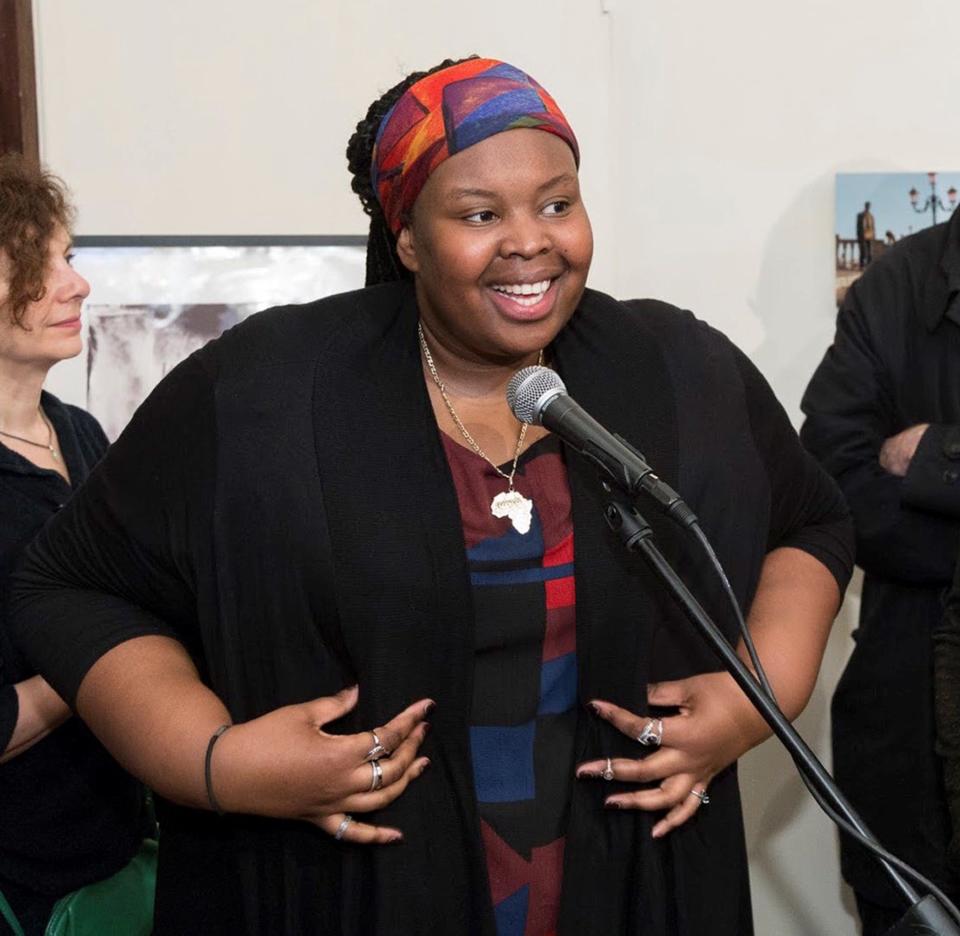Khadija Saye, in this space we breathe, review: haunting images by the young artist who died in the Grenfell Tower fire

In May 2017, 24-year old Khadija Saye was the youngest exhibitor in the Venice Biennale’s Diaspora Pavilion, her mesmerising photographic works commanding attention alongside such leading lights as Isaac Julien and Yinka Shonibare. Just one month later, Saye died in the Grenfell Tower fire.
Her self-portraits – reflecting upon her Gambian heritage and mixed Christian-Muslim background – were Saye’s means of exploring “the deep rooted urge to find solace in a higher power”. Nine large prints of the pieces she created for Venice are now showing in the open air, as part of a summer series of public art displays on the corner of Westbourne Grove, in west London.
Saye’s use of a precarious method of photographic printing – the wet plate collodion tintype – gives the images a haunting, antique quality. They evoke dreams of a lost world of rituals, relatives and remembrance, that still resonated with the traumas of Saye’s life in London.
Here the spiritual and the physical are melded, her own face and body the common denominator, acting out in each image a Gambian tradition. At times she may look directly at us – her expression hard to read. Her mouth may be obscured by shells, or her body swathed in robes or flowers. In one, she seems to be transported to another plane by the sound within a ceramic vessel clasped to her ear. In a number of them, the wispy, elusive forms swelling around her suggest the existence of an ethereal plane, reminiscent of Victorian photographs of conjured-up ectoplasm. Other worlds encompass us, these photographs seem to say, and are accessible, and our escape, from a difficult present.
The display of Saye’s images at this spot and at this moment is particularly poignant. I overheard one woman telling her small daughter, “Look! That’s Khadija. Remember her? She was Grandma’s carer.” Grenfell, where Saye and her mother both lost their lives along with 70 others, is just a mile away.

The Notting Hill Carnival that would ordinarily thunder down Westbourne Grove over the August Bank Holiday weekend is cancelled. The matter of black lives remains a most pressing concern. And Khadija Saye’s images, standing quietly and mysterious on the corner of this slowly re-animating street corner, appear today even more haunting and transcendent, offering perhaps a moment to reflect on our connections with the past, the present, and what Saye might have gone on to achieve had she been permitted a future.

